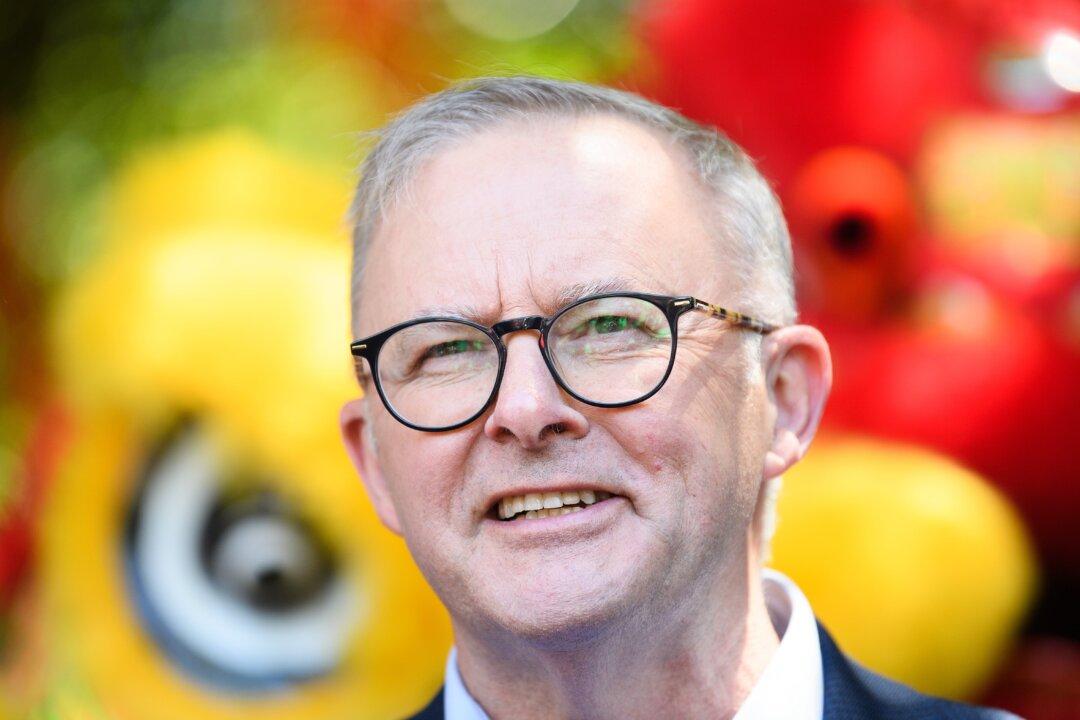Advocates for a rapid transition to net-zero have not explained the real limitations of battery storage supposed to underpin the viability of the net-zero push, according to an industry engineer.
Nick Kastelstein, a senior mechanical engineer at GPA Engineering, says media coverage has also failed to inform the public about the true nature of Australia’s energy needs, claiming the debate has been oversimplified.
“You have this problem where you generate electricity when the sun shining, or the wind is blowing, and you need to store it somewhere and withdraw it later. But that kind of volume of storage is enormous, absolutely enormous,” he told The Epoch Times.
Kastelstein said that while lithium-ion batteries had a role to play by stepping in when there were faults in the network, in terms of pure storage and “firming” they were unsuitable.

He pointed to the Tesla-built Hornsdale Power Reserve in South Australia, the world’s largest renewable battery at the time of its construction in 2017.
“The Hornsdale battery in South Australia for example, if you looked at the state’s electricity supply curve, you can hardly even see what is contributed by the battery,” he said. “That kind of bulk storage that we would need for renewable sources isn’t going to cut it. I think everyone who’s realistic knows that.”
“Battery technology has been changing and improving so much over the years, it just gets better and better,” he added. “But they are still have a pretty low level of ’technology readiness.'”
Net-Zero Push Underway in Australia
In recent weeks, Australia’s Energy Minister Chris Bowen and the Australian Energy Market Operator (AEMO) have called for more investment in battery storage as part of the country’s push towards net-zero.Under the Labor government, Australia will aim to cut emissions by 43 percent by 2030, up from the previous target of 26-28 percent, and reach net-zero by 2050.
The government will also attempt to overhaul the energy grid so that 82 percent of electricity will come from renewable sources by 2030. As of December 2021, around 64.67 percent of Australia’s electricity generation comes from coal-fired power plants.
“Yes, you can say the wind doesn’t always blow, and the sun doesn’t always shine. Well, the rain doesn’t always fall out there, but we managed to store the water,” he told reporters on June 16. “We can store the renewable energy if we have the investment, and that investment has been lacking for the last decade. That’s the problem.”

While AEMO’s newly released 30-year electricity market roadmap aims to shut down around 60 percent of coal-fired generators by 2030 and increase investment in renewable energy, while at the same time servicing the electricity needs of a growing population (demand is set to double by 2050).
However, Kastelstein said the energy debate had been simplified into measuring how much renewable energy contributed to the electricity grid.
“Of all the energy, electricity is just 20-25 percent of our consumption. The other 75-80 percent of the energy we consume is via direct use of coal and gas in industrial processes, domestic and commercial gas, and the big one, liquid fuels for vehicles,” he said.
“Eighty percent of our energy usage as a country is non-renewable. And as a country, we export twice as much than we use. So from our total energy output, solar and wind account for just 0.8 percent.”





